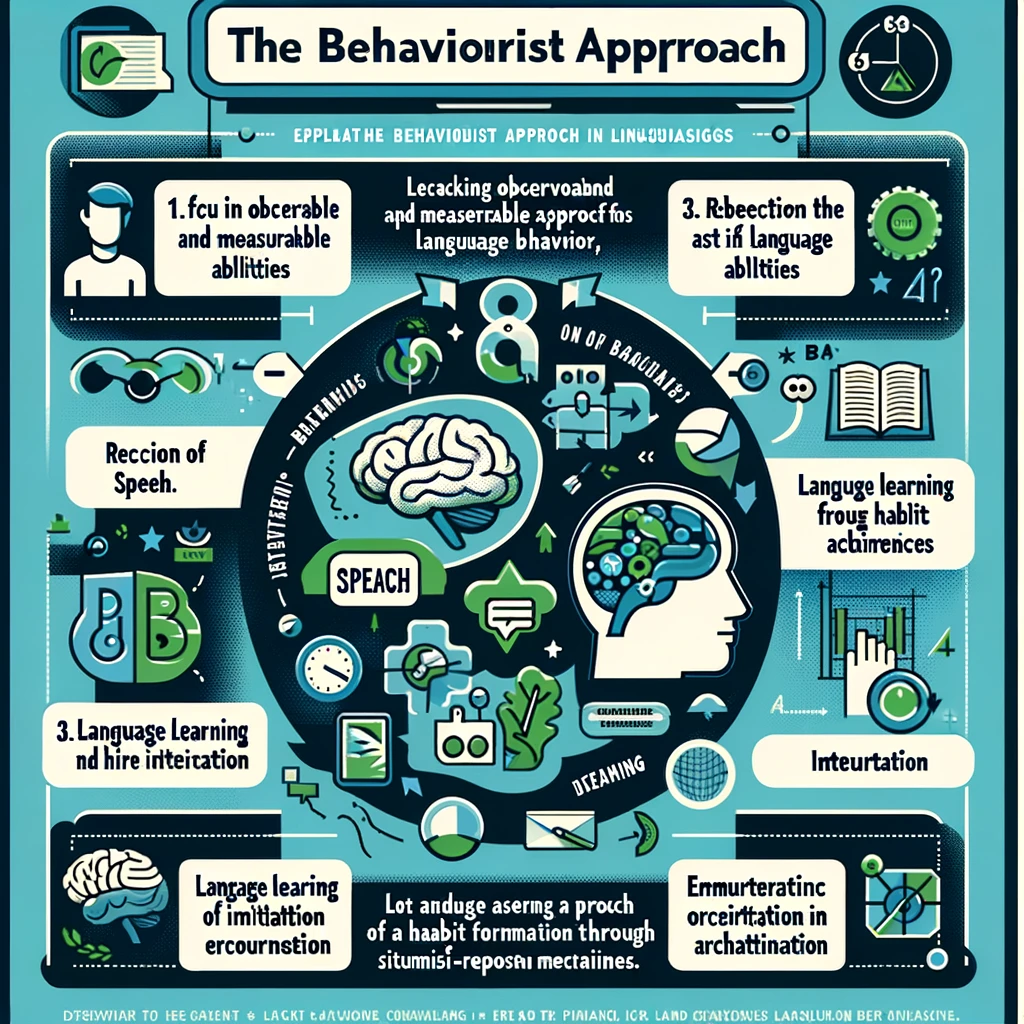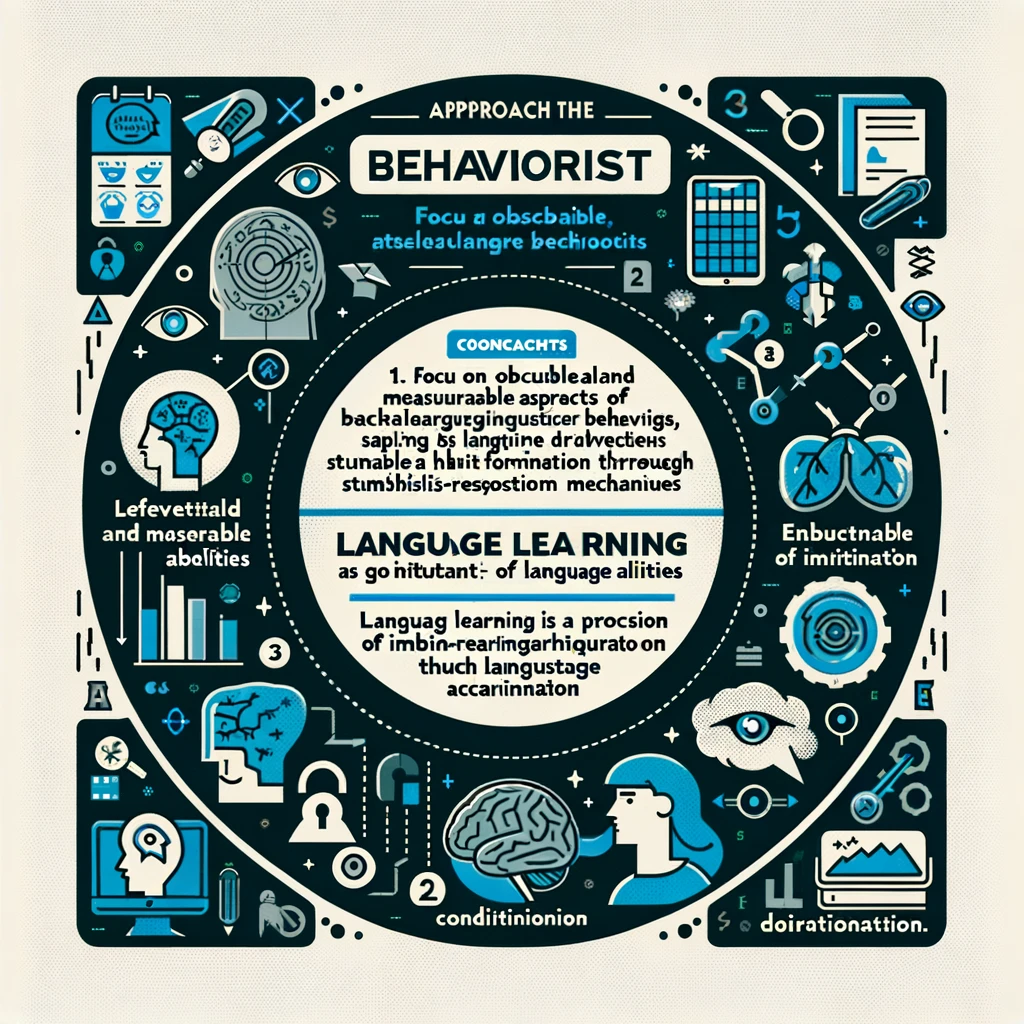In this article, we will explore Behaviorist Approach In Linguistics , how it has shaped our understanding of language, and its relevance in the modern study of linguistics.
What Is Behaviorist Approach In Linguistics.

The Behaviourist Approach, (The Skinnerian Approach) : According to this approach, language learning is nothing but a set of speech habits. The stress is on mechanical training or habit formation. Step by step the student is trained into using the language in all its aspects. Language is one of the human abilities that has generated the most debates throughout history. And, thanks to language, we can establish relationships with other people and share our knowledge about the world around us.
Behavioral theory holds that language acquisition is the result of exposure to and interaction with the environment. According to the behaviorist approach, children learn language through imitation, repetition and reinforcement. Children are believed to acquire language by observing and listening to adults and by receiving positive feedback when they produce correct utterances. From this perspective, the existence of an innate linguistic capacity or a universal grammar is not postulated.
In behaviorism, language learning is considered to be based on associations between stimuli and responses, and on the repetition and reinforcement of linguistic patterns. Behaviorist theory also emphasizes the role of the environment and external influences in the language acquisition process.
Principles of Behaviorist Theory
- This approach, which as we have said has the American psychologist Burrhus Frederic Skinner as one of its most important representatives, maintains that all human behavior is governed by the general Stimulus-Response scheme .
- This means that what we do has consequences that can be good or bad, being able to anticipate them to behave in one way or another .
- Regarding language, the Behavioral Theory states that it is another behavior that functions in a similar way to other human behaviors, such as walking or cognitive ability, and that it exists thanks to a series of stimuli that contribute to its appearance, maintenance and development of verbal behavior.
- For example, we encourage our babies to make different sounds. When they approach the words mom or dad, the child discovers that all kinds of events can occur, such as us smiling or holding him in our arms.
- He argues that imitation is the child’s ability that serves as a motor or allows access to language , along with the need to satisfy certain needs such as eating, drinking or playing.
- Depending on the reinforcement they obtain from the environment, children will progressively change or expand their verbal emissions, making them increasingly resemble adult language as they grow.
Positive and negative aspects of Behaviorist Theory
Behavioral Theory is not concerned with language itself , but with the preverbal stage and the context in which the child moves. Therefore, this theory, like the rest, has a series of strong points and other weaknesses.
- Behaviorism led to the beginning of taking into account the context in which the child moves as an important aspect in the acquisition and development of language.
- Your contribution to the Stimulus-Response scheme is important.
- The most important thing about behaviorism is precisely the debate that was created around it.
On the other hand, the weak points of behaviorism could be summarized as follows:
- Language is a very complex aspect of the human being and this theory cannot explain it sufficiently.
- The explanations are based on animal learning, so there is a generalization from what animals do to what people do.
Advantages and disadvantages of behaviorism.
Advantages:
a) You can observe the ways of evaluating.
b) Modifies behavior, giving the opportunity for reinforcement.
c)It is a paradigm that is still present in teaching-learning.
Disadvantages:
a) The attempt to predict and control behavior empirically and experimentally.
b) Teaching is presented as a paradigm of reinforcement contingencies that modify the student’s behavior.
c) Conditions the student to carry out previously defined activities.
The Behaviorist Approach in Linguistics, often associated with B.F. Skinner, is a theory of language acquisition and development that emphasizes observable and measurable behaviors over internal processes. Here’s a guide presented in a tabular form to summarize the key aspects of this approach:
| Aspect | Description |
|---|---|
| Foundation | Based on Behaviorist Psychology, particularly the works of B.F. Skinner. |
| Key Concept | Language learning is a form of behavior, shaped by stimulus-response sequences and reinforcement. |
| Language Acquisition | Emphasizes imitation, practice, and habit formation. Children learn language through mimicry and reinforcement. |
| Role of Environment | Environment is crucial, as it provides stimuli and reinforcements that shape language behavior. |
| Nature of Learning | Seen as mechanical and repetitive. Language learning involves associating words with meanings through repeated exposure and reinforcement. |
| Innate Language Ability | Largely rejected the idea of innate language abilities or universal grammar. Believed that all learning, including language, is dependent on the environment. |
| Methodology | Focuses on observable and measurable aspects of language use, rather than internal cognitive processes. |
| Criticism | Lacks explanation for the creative aspect of language use, such as the ability to generate new sentences. Overemphasis on mimicry and repetition. |
| Influence on Teaching | Led to the development of audio-lingual teaching methods, emphasizing drilling and repetition. |
| Later Developments | The approach has been largely supplanted by cognitive and social-interactionist theories, which give more importance to the mind’s role in language acquisition. |
This table outlines the fundamental principles of the Behaviorist Approach in Linguistics, highlighting its unique perspective on how language is learned and used.
